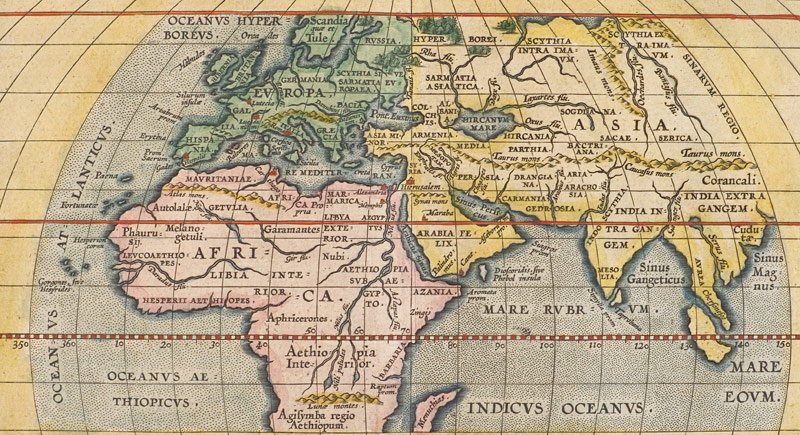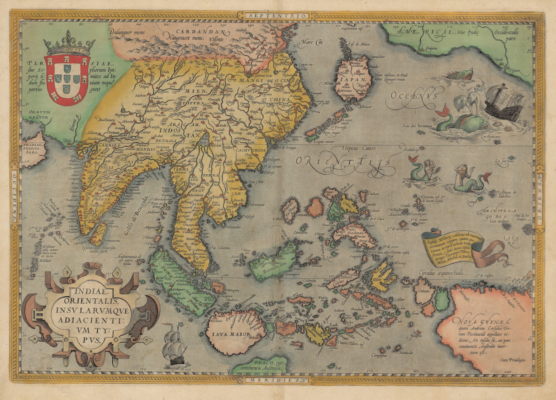

These sources are nameless - but the sharp detail within the Spanish sphere gives the game away. Much of the fine detail was derived from Spanish sources - itself a remarkable accomplishment, as the Spanish and Portuguese were notoriously close-lipped regarding their discoveries in the New World. Ortelius' SourcesThe general shape of the continent and many of its details were drawn from those appearing on Ortelius' friend and fellow mapmaker Gerard Mercator's massive (and unobtainable) 1669 world map. Peru and the Rio de la Plata are well-detailed, although the size of the latter is exaggerated. In Mexico and the Southwest, Coronado's placenames of Ceuola, Tiguex and Quivira appear. The Chilean coast features the 'Potato-shaped' bulge also found on Mercator's map. The Pacific coast exhibits significant distortion both in North and South America. The Pacific Ocean itself appears optimistically far narrower than its actual width, with New Guinea appearing south of Quivira and the strait of Anian. Beyond the Strait of Magellan Tierra del Fuego appears not as an island but as part of a massive southern continent, the apocryphal Terre Australis, extending all the way to New Guinea. The Caribbean and eastern South America are shown with remarkable accuracy. Lawrence, showing evidence from Cartier's voyages. The American Northeast is dominated by Nova Francia and the St. On The MapGiven how recently the Western Hemisphere had come to the attention of European scholars, the outline of the continent is remarkably accurate and recognizable.

Ortelius' success and the spread of his atlas made this fine map the standard - and best - representation of the Americas during the initial period its colonization. This is Abraham Ortelius' map of the Western Hemisphere, considered to be the 'first map of the Americas to appear in a modern atlas' (Schwartz). Minnesota - North Dakota - South Dakota.Massachusetts - Connecticut - Rhode Island.


 0 kommentar(er)
0 kommentar(er)
